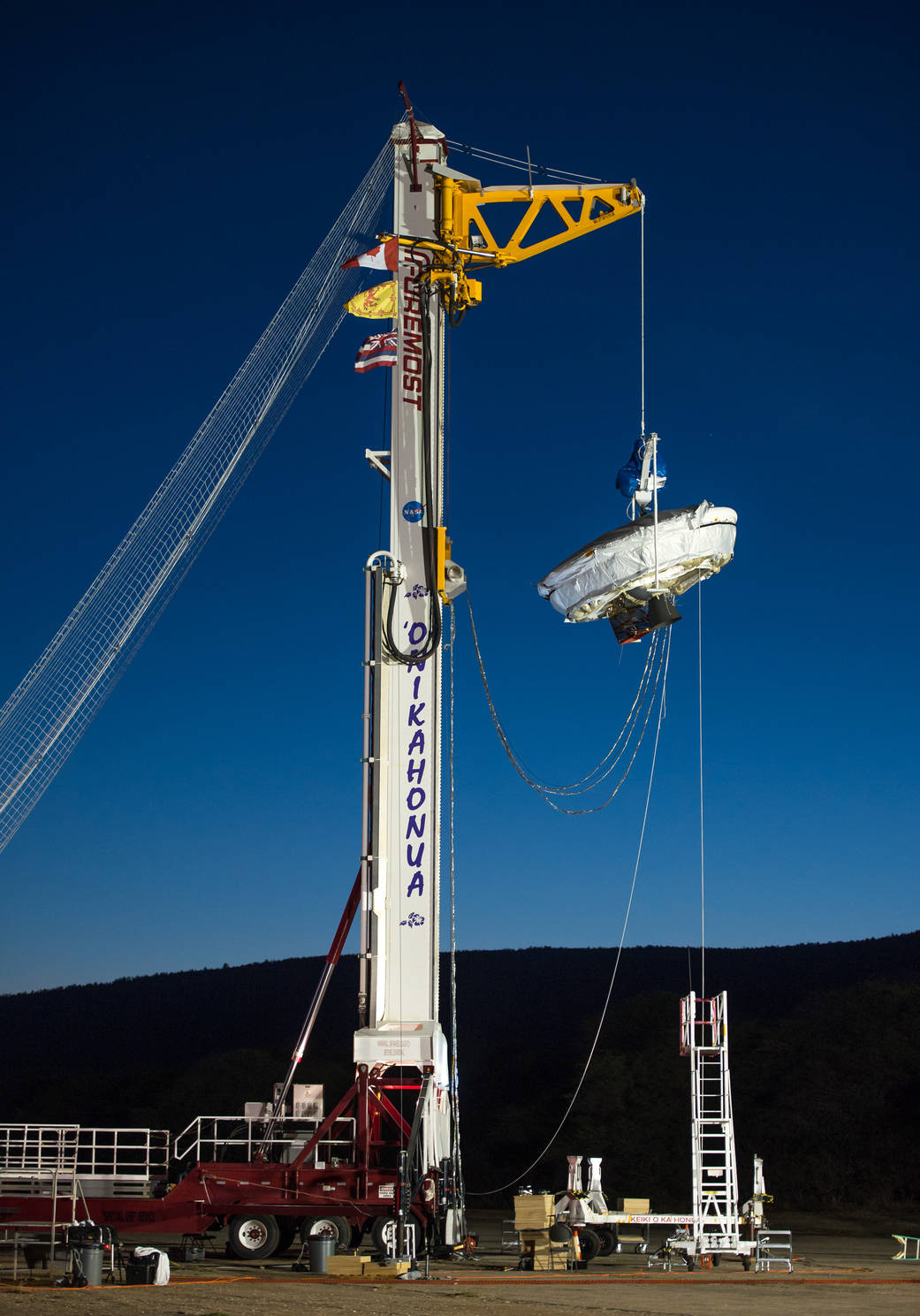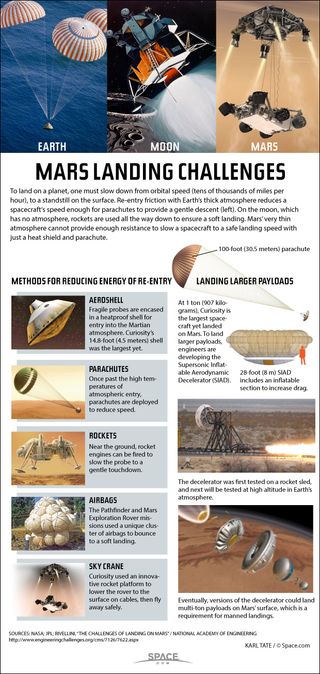
Editor's update: NASA has delayed the launch of its Low-Density Supersonic Decelerator to no earlier than Monday (June 8), at 1:30 p.m. ET. The story below has been updated with new launch target times.
NASA now aims to launch a flight test Monday (June 8) of an innovative "flying saucer" that could help humans land on Mars in the future, and you can watch the dramatic action live.
The space agency's Low-Density Supersonic Decelerator (LDSD) test vehicle is scheduled to launch from the Hawaiian island of Kauai no earlier than 1:30 p.m. EDT (1730 GMT; 0730 local Hawaiian time) on Monday, borne aloft by a giant balloon. You can watch the test live on Space.com, courtesy of NASA TV, beginning at 1 p.m. EDT (1700 GMT). The launch was originally slated for June 2, but NASA has delayed the flight repeatedly due to strong winds and rough ocean conditions.
Once launched, it will take more than two hours for the balloon to get high enough for the LDSD test to proceed, so you'll have to be patient. Coverage of the flight test will likely cut out about 30 minutes after liftoff, then resume 20 minutes before the LDSD test vehicle is dropped from the balloon and begins flying freely, NASA officials said. [NASA's 2nd "Flying Saucer" Test for Mars Landings (Photos)]

The LDSD system consists of a saucerlike "supersonic inflatable aerodynamic decelerator" (SIAD), along with a 100-foot-wide (30 meters) supersonic parachute. Together, this equipment is designed to help get superheavy payloads, including human habitat modules, down safely on the surface of Mars.
NASA's current Mars-landing tech can handle equipment no heavier than 1 ton or so, space agency officials have said. This current gear — a rocket-powered "sky crane" paired with a 51-foot-wide (15 m) parachute — was thus pretty much maxed out by NASA's Curiosity rover, which touched down on the Red Planet in August 2012.
If all goes according to plan on Monday, the 400-foot-wide (122 m) balloon will ascend to about 120,000 feet (36,580 m), then drop the 7,000-lb. (3,175 kilograms) LDSD test vehicle. The craft's onboard rocket engine will kick on at that point, boosting the vehicle up to 180,000 feet (54,860 m). (Earth's atmosphere at such high altitudes is a good analogue for Mars' thin air, LDSD mission team members have said.)
Get the Space.com Newsletter
Breaking space news, the latest updates on rocket launches, skywatching events and more!
The SIAD will then inflate, rapidly reaching 20 feet wide (6 m), while the LDSD vehicle is going about three times the speed of sound (Mach 3). The resulting increase in drag will help slow the test craft down to Mach 2.35, at which point the huge parachute will deploy, allowing the vehicle to make a soft splashdown in the Pacific Ocean.
Monday's planned test will be the second LDSD flight; the first lifted off last June, also from Kauai. The parachute was torn apart shortly after deployment during last year's trial. This second test will feature a modified, stronger version of the supersonic chute, LDSD team members said.
While NASA hopes to launch the LDSD vehicle Monday, uncooperative weather may well push the test back by several days. Indeed, the test was originally scheduled for June 2, but mission team members have postponed it repeatedly because of strong winds and large waves, which could hamper vehicle-recovery operations, NASA officials said.
"I'm hopeful that by the end of the week or by early next week, we'll have some better opportunities," LDSD project manager Mark Adler, of NASA's Jet Propulsion Laboratory in Pasadena, California, said during a prelaunch briefing on June 1.
The current LDSD launch window runs through June 12. A second window is also available from July 7 through July 17.
Follow Mike Wall on Twitter @michaeldwall and Google+. Follow us @Spacedotcom, Facebook or Google+. Originally published on Space.com.
Join our Space Forums to keep talking space on the latest missions, night sky and more! And if you have a news tip, correction or comment, let us know at: community@space.com.

Michael Wall is a Senior Space Writer with Space.com and joined the team in 2010. He primarily covers exoplanets, spaceflight and military space, but has been known to dabble in the space art beat. His book about the search for alien life, "Out There," was published on Nov. 13, 2018. Before becoming a science writer, Michael worked as a herpetologist and wildlife biologist. He has a Ph.D. in evolutionary biology from the University of Sydney, Australia, a bachelor's degree from the University of Arizona, and a graduate certificate in science writing from the University of California, Santa Cruz. To find out what his latest project is, you can follow Michael on Twitter.